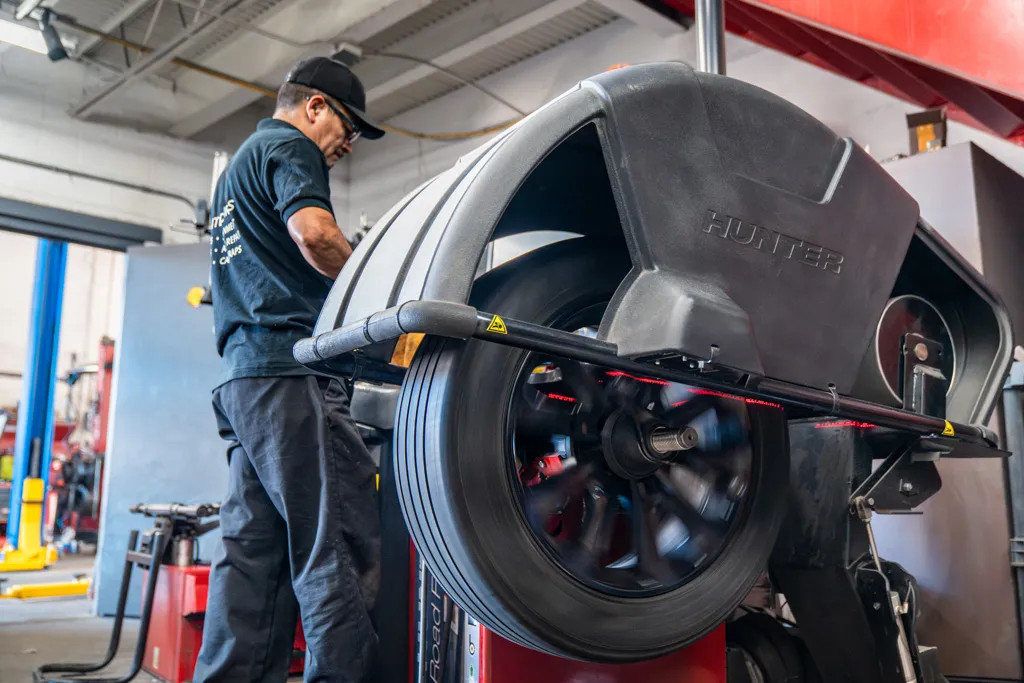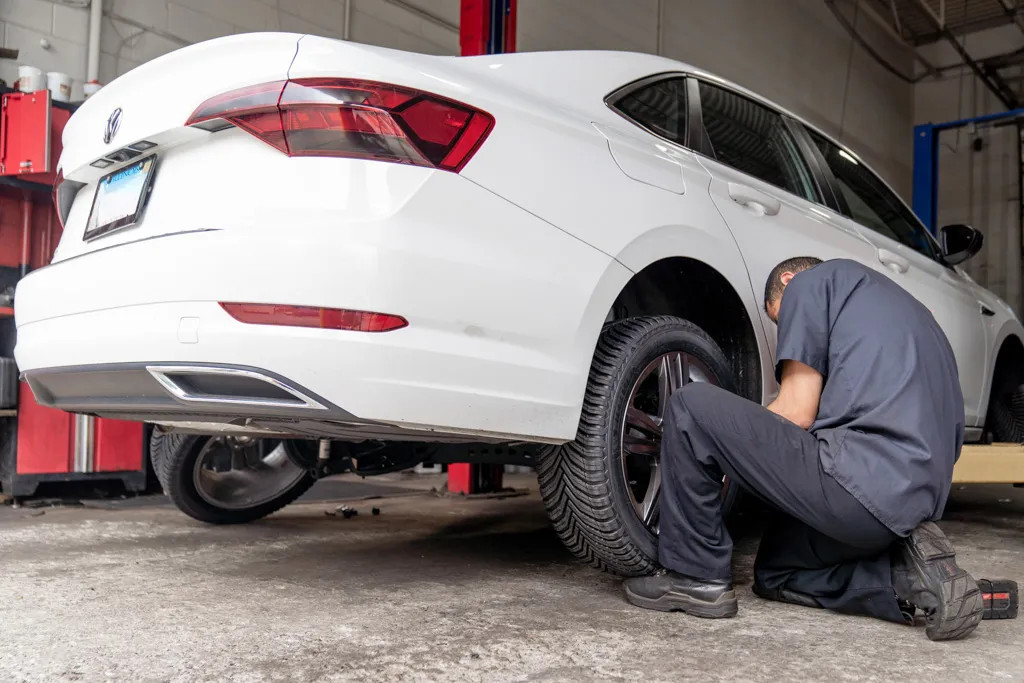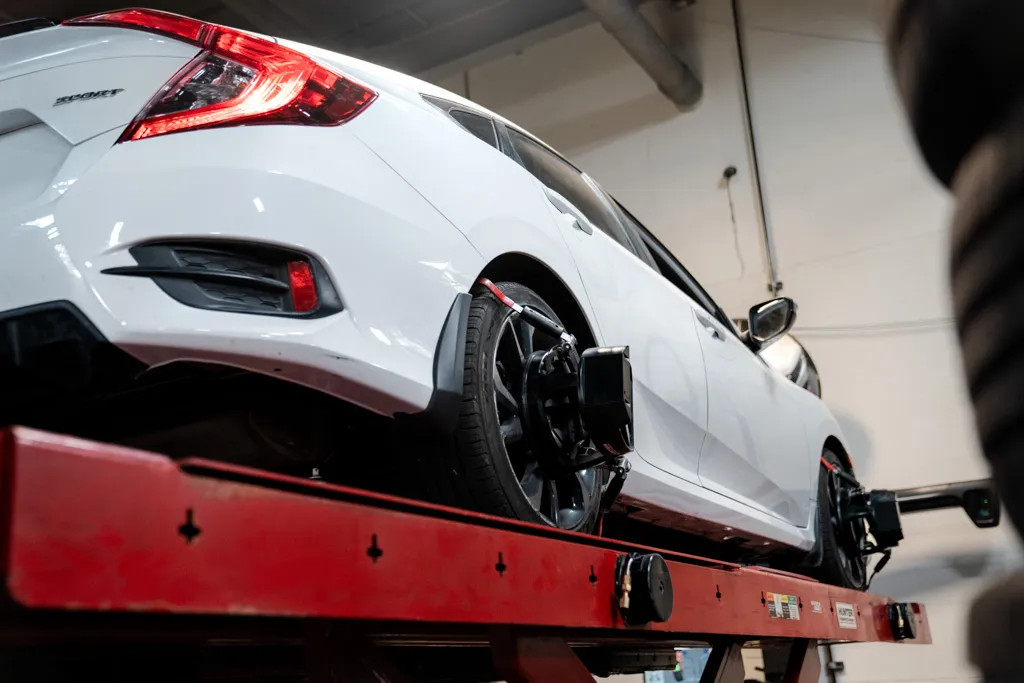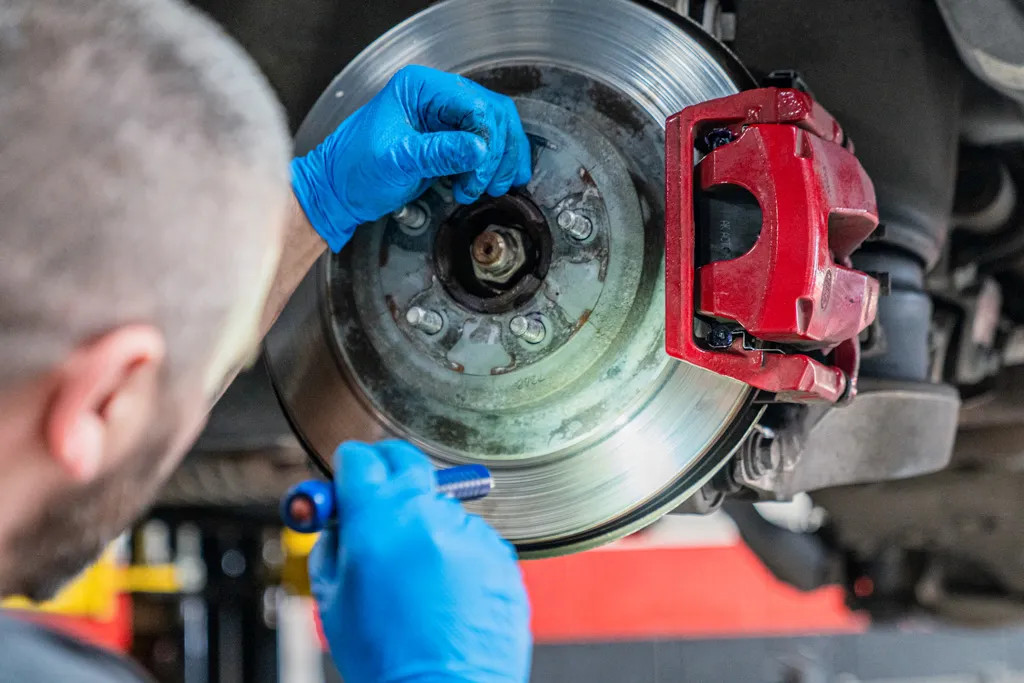Are you wondering if your tires are the reason your car sounds louder than usual? Tire noise can indeed affect your driving experience, and at streetsounds.net, we’re diving deep into the world of urban acoustics to help you understand why. We will explore how tire type, wear, and road conditions influence the sounds your vehicle makes, providing solutions to mitigate unwanted noise. Dive in to discover how tire sounds impact the symphony of the streets.
1. Decoding Tire Noise: What’s Normal and What’s Not?
Is your car’s soundtrack a bit too intense lately? It’s essential to differentiate between normal tire sounds and those that signal a potential issue.
Normal tire noise can arise from:
- Tire Type, Size, and Tread Design: Different tires produce varying noise levels.
- Road Conditions: The surface you’re driving on significantly impacts tire noise.
- Driving Conditions and Habits: Your driving style can amplify or reduce noise.
Abnormal tire noise might indicate:
- Uneven Tread Wear: Irregular wear patterns can cause excessive noise.
- Improper Maintenance: Lack of maintenance can lead to noisy tires.
- Damage to Non-Tire Parts: Issues with other car components can manifest as tire noise.
2. Normal Culprits: Why Your Tires Might Be Naturally Noisy
Why do some tires sing a louder tune than others? Several factors contribute to normal tire noise.
2.1. Tire Type
Do all tires sound the same? Absolutely not.
- Winter Tires: Especially studded ones, and off-road tires tend to be louder due to their aggressive tread patterns.
- Run-Flat Tires: These have stiffer sidewalls, which increase noise levels.
- Performance Tires: While designed for grip and responsiveness, they aren’t silent.
For a quieter ride, consider:
- Touring Tires: Designed for comfort and low noise.
- Low Rolling Resistance Tires: These minimize friction and noise.
2.2. Tire Size
Does size matter when it comes to tire noise? It certainly does.
Larger tires, such as a 265/65, have a greater contact patch with the road, leading to more noise. Conversely, smaller tires, like a 40-series, have less sidewall to absorb sound. According to a study by the National Highway Traffic Safety Administration (NHTSA) in 2023, tire size significantly impacts vehicle noise levels, with larger tires generally producing more noise.
2.3. Tire Tread
How does the tread pattern affect noise? The design of your tire’s tread plays a crucial role.
- Directional Treads: Generally noisier than asymmetrical patterns.
- Aggressive and Symmetrical Treads: Also tend to produce more noise.
The noise is often caused by air being compressed between the tire and the road surface as it moves through the grooves. The more space between the tread blocks, the more air gets trapped, amplifying the sound.
Manufacturers often use pitch sequencing, which involves varying the tread block patterns to create a neutral white noise, minimizing the distinct tones produced by each block.
2.4. Road Conditions
Ever notice how your tires sound different on various surfaces?
Coarse and porous surfaces can make your tires sound louder. Freshly finished roads may have air pockets or be sticky, creating a hollow noise. Uneven roads, gravel, and brick also contribute to drumming sounds.
For accurate noise assessment, test your tires on:
- New Asphalt Roads: These are the quietest.
- Spacerless Concrete: Provides minimal additional noise.
2.5. Driving Conditions and Habits
Does your driving style impact tire noise? Absolutely. Aggressive driving habits can increase noise levels.
- Constant High Speeds: More air circulates through the tread, amplifying noise.
- Hard Braking: Compresses air in the grooves, increasing noise.
- High-Speed Cornering: Similar to hard braking, this compresses air and causes squealing as tires lose traction.
The air within the tire also acts as a resonance chamber, contributing to a drumming sound.
3. When to Worry: Abnormal Reasons for Loud Tires
When should you be concerned about tire noise? New or unusual sounds can indicate damage or the need for maintenance.
 Tire wear patterns can indicate alignment issues
Tire wear patterns can indicate alignment issues
3.1. Uneven Tread Wear
What does uneven tread wear tell you? It can signal various issues, from improper inflation to alignment problems.
- Under-Inflation: Wear on the edges of the tread.
- Over-Inflation: Wear on the center of the tread.
- Wheel Misalignment (Camber Angle): Wear on one shoulder of the tire.
- Wheel Misalignment (Toe-In): Feathering, where one edge of the rib rounds while the other sharpens.
- Suspension Problems: Local or patch wear, with scooped areas across the tread.
Local or patch wear is particularly dangerous, as it causes heavy vibration. Addressing these patterns promptly and rotating tires can mitigate the issue.
3.2. Improper Maintenance
Can a lack of maintenance cause loud tires? Yes, regular maintenance is crucial for preventing noise and ensuring even wear.
A good maintenance routine includes:
- Tire Balancing: Ensures even weight distribution.
- Tire Rotation: Evens wear across all tires.
- Wheel Alignment: Ensures wheels are properly aligned.
3.2.1. Tire Balancing
Why is tire balancing important? Imbalanced wheels lead to uneven wear patterns, which can become noisy.
 Tire balancing ensures even weight distribution
Tire balancing ensures even weight distribution
Tire imbalance occurs when there are heavier spots on the tire. Balancing involves adding small weights opposite these spots to ensure even weight distribution. The Technology and Maintenance Council (TMC) recommends that tires be balanced every 3,000 to 6,000 miles to maintain optimal performance and reduce noise.
3.2.2. Tire Rotation
How does tire rotation help? Rotating tires helps them wear more evenly, reducing noise and prolonging their lifespan.
 Tire rotation promotes even wear
Tire rotation promotes even wear
Without rotation, front tires, which bear more weight, wear faster. It’s recommended to rotate your tires every 5,000 to 8,000 miles.
3.2.3. Wheel Alignment
Why is wheel alignment necessary? Misaligned wheels cause uneven wear and noise.
 Proper wheel alignment prevents uneven wear
Proper wheel alignment prevents uneven wear
Misalignment means the wheels aren’t parallel to each other or perpendicular to the ground. Wheel alignment involves adjusting three angles:
- Camber: The angle of the wheel perpendicular to the ground.
- Caster: The relation of the steering axis to the ground.
- Toe: The wheels being perfectly parallel to each other.
While manufacturers often don’t provide specific alignment recommendations, a good rule of thumb is to align the wheels annually or with every tire rotation.
3.3. Damage to Non-Tire Parts
Can other car parts cause tire-like noise? Absolutely. Loose or worn components can create sounds that mimic tire noise.
 Damaged car parts can cause unusual noises
Damaged car parts can cause unusual noises
Pay attention to:
- Wheel Bearings: Roaring noise when changing lanes.
- Brakes: Squeaking or squealing sounds.
- CV Joints: Clicking or popping noises.
- Struts: Increased shock and vibration.
- Drive Belt: A sound easily confused with wheel noise.
4. Silencing the Roads: Solutions to Reduce Tire Noise
How can you reduce tire noise? Here are several effective solutions.
- Choose Tires Wisely: Prioritize touring tires for their noise-absorbing properties.
- Maintain Your Tires: Regular balancing, rotation, and alignment are essential.
- Change Tires When Needed: Replace tires every 6-10 years or when cracks appear.
5. Streetsounds.net: Your Source for Urban Acoustics
At streetsounds.net, we’re dedicated to exploring the rich tapestry of urban sounds. From the rumble of traffic to the melodies of street performers, we capture and curate the essence of city life.
- Extensive Sound Library: Discover a vast collection of high-quality urban sound effects.
- Expert Guidance: Learn how to record and manipulate street sounds professionally.
- Community Connection: Join a vibrant community of sound enthusiasts and creators.
Address: 726 Broadway, New York, NY 10003, United States.
Phone: +1 (212) 998-8550.
Website: streetsounds.net.
6. The Symphony of the Streets: How Tire Sounds Contribute
Have you ever considered how tire sounds contribute to the overall urban soundscape?
Tire sounds, whether the gentle hum of a hybrid or the aggressive roar of a sports car, add layers to our perception of the city. They blend with the honking horns, distant sirens, and bustling crowds to create a unique auditory experience.
The study “Acoustic Ecology of Urban Environments,” published in the Journal of Urban Planning and Development in 2022, emphasizes the importance of understanding and managing urban sounds to create healthier and more livable cities.
7. Optimizing Your Vehicle’s Acoustics: Tips and Tricks
Want to fine-tune your car’s acoustics?
- Sound Dampening Materials: Install sound dampening materials in your car to reduce road noise.
- Regular Maintenance: Keep your tires and suspension in good condition.
- Choose Quiet Routes: Opt for quieter roads and highways whenever possible.
8. The Future of Tire Noise: Innovations and Trends
What does the future hold for tire noise reduction?
- Advanced Tire Technology: Manufacturers are developing tires with noise-canceling properties.
- Electric Vehicles: The rise of EVs, which are inherently quieter, is reducing overall road noise.
- Smart Road Surfaces: New road surfaces are designed to minimize tire noise.
9. Real-World Examples: Tire Sounds in Media
How are tire sounds used in movies, music, and games?
- Movies: Tire squeals and skids heighten the tension in car chase scenes.
- Music: Tire sounds can be sampled and incorporated into electronic music and soundscapes.
- Games: Realistic tire sounds enhance the immersive experience of racing and driving games.
10. Community Spotlight: Sharing Your Tire Sound Stories
Have you had a memorable experience with tire sounds?
- Share Your Stories: Join the streetsounds.net community and share your experiences with tire sounds.
- Submit Your Recordings: Contribute to our sound library with your unique tire sound recordings.
- Connect with Experts: Get advice and insights from sound engineers and urban acoustics specialists.
11. Exploring the Science Behind Tire Noise
Why do tires produce the sounds they do?
Tire noise is a complex phenomenon involving several factors:
- Tread Pattern: The design of the tread affects how air moves through the grooves.
- Tire Composition: The materials used in the tire affect its resonance and vibration.
- Road Surface: The texture and composition of the road affect the interaction between the tire and the surface.
According to research from the Acoustics Research Institute at the University of California, Berkeley, in March 2024, understanding these factors can lead to the development of quieter and more efficient tires.
12. DIY Sound Recording: Capturing Tire Sounds
Want to capture your own tire sounds?
- Use a High-Quality Microphone: Invest in a microphone designed for sound recording.
- Find a Quiet Location: Choose a location with minimal background noise.
- Experiment with Different Techniques: Try recording from different angles and distances.
- Edit and Enhance Your Recordings: Use audio editing software to clean up and enhance your recordings.
13. The Cultural Significance of Tire Sounds
How have tire sounds influenced art, literature, and popular culture?
- Art: Artists have used tire sounds in installations and performances to explore themes of urban life and transportation.
- Literature: Writers have used tire sounds to evoke the atmosphere of cities and highways.
- Popular Culture: Tire sounds have become iconic elements of car culture and racing.
14. Maintaining Optimal Tire Pressure for Noise Reduction
Why is maintaining correct tire pressure crucial for noise reduction?
Proper tire pressure ensures that the tire makes optimal contact with the road surface, reducing unnecessary friction and noise. According to a study by the Rubber Manufacturers Association, maintaining correct tire pressure can also improve fuel efficiency and extend tire life.
15. Choosing the Right Tire Tread Pattern for Quieter Rides
How do different tire tread patterns affect noise levels?
- Circumferential Rib Patterns: These patterns are designed for smooth and quiet rides, making them ideal for touring tires.
- Asymmetrical Patterns: These patterns balance performance and noise reduction, providing a good compromise for everyday driving.
- Symmetrical Patterns: While versatile, symmetrical patterns can sometimes generate more noise due to their uniform design.
- Directional Patterns: Designed for optimal water evacuation, these patterns often produce more noise due to their aggressive tread design.
16. The Impact of Tire Age on Noise Levels
Does the age of a tire affect its noise levels?
As tires age, the rubber can harden and become less flexible, leading to increased noise levels. Additionally, older tires may develop cracks and other forms of degradation, which can further contribute to noise.
17. How Weather Conditions Affect Tire Noise
Do weather conditions influence tire noise?
- Wet Conditions: Water on the road surface can create additional noise as it is displaced by the tire.
- Dry Conditions: Dry roads tend to produce less noise, but the type of surface still plays a significant role.
- Cold Conditions: Cold temperatures can cause the tire rubber to stiffen, increasing noise levels.
- Hot Conditions: Hot temperatures can soften the tire rubber, potentially reducing noise but also increasing wear.
18. The Role of Suspension Systems in Minimizing Tire Noise
How does your car’s suspension system affect tire noise?
A well-maintained suspension system helps to absorb shocks and vibrations from the road, reducing the amount of noise that is transmitted to the vehicle’s cabin. Worn or damaged suspension components can lead to increased tire noise and a rougher ride.
19. Exploring the Decibel Levels of Common Tire Noises
What are the typical decibel levels of different tire noises?
- Normal Tire Hum: 60-70 dB
- Aggressive Tread Noise: 70-80 dB
- Tire Squeal: 80-90 dB
- Uneven Wear Noise: Can vary widely depending on the severity of the wear
According to the National Institute for Occupational Safety and Health (NIOSH), prolonged exposure to sounds above 85 dB can lead to hearing damage.
20. The Use of Tire Noise in Automotive Safety Systems
How is tire noise used in modern automotive safety systems?
Some advanced driver-assistance systems (ADAS) use tire noise as a cue to detect changes in road conditions and adjust vehicle settings accordingly. For example, if the system detects increased tire noise, it may adjust the traction control or stability control systems to improve handling and safety.
21. Innovative Materials in Tire Manufacturing for Noise Reduction
What innovative materials are being used to reduce tire noise?
- Noise-Dampening Rubber Compounds: These compounds are designed to absorb vibrations and reduce noise levels.
- Foam Inserts: Some tires feature foam inserts that help to dampen noise and improve ride comfort.
- Advanced Polymers: New polymers are being developed to create tires that are both durable and quiet.
22. Tire Noise and Its Impact on Driver Fatigue
Can tire noise contribute to driver fatigue?
Studies have shown that prolonged exposure to road noise, including tire noise, can contribute to driver fatigue and reduce alertness. By minimizing tire noise, drivers can experience a more comfortable and less tiring driving experience.
23. The Legal Regulations Surrounding Tire Noise Levels
Are there legal regulations regarding tire noise levels?
Some countries and regions have regulations regarding the maximum permissible noise levels for tires. These regulations are designed to protect public health and reduce noise pollution.
24. Future Trends in Tire Technology for Quieter Transportation
What are some future trends in tire technology aimed at quieter transportation?
- Airless Tires: These tires eliminate the need for inflation and can potentially reduce noise levels.
- Self-Inflating Tires: These tires automatically maintain optimal pressure, reducing noise and improving fuel efficiency.
- Smart Tires: These tires use sensors to monitor road conditions and adjust their performance accordingly, potentially reducing noise.
25. Frequently Asked Questions
25.1. What Does It Mean When Your Tires Make Noise?
Tire noise can indicate normal road sounds or potential problems like wear, imbalance, or improper inflation. It’s crucial to differentiate between the two.
25.2. Is It Tire Noise or Wheel-Bearing?
Differentiating between tire noise and wheel-bearing issues can be tricky, with tire noise changing with road surface and speed. Wheel bearing noise is consistent and increases with speed.
25.3. How to Fix Noisy Tires?
Fixing noisy tires involves inspecting for wear, ensuring proper inflation, and addressing any alignment or balancing issues.
25.4. Can New Tires Be Noisy?
Yes, new tires can be noisy, especially if they have aggressive tread patterns designed for specific conditions like winter or off-road use. The noise level can also depend on the tire’s construction and the vehicle’s suspension system.
25.5. What Is the Loudest Tire Noise?
The loudest tire noise is often a high-pitched squeal that occurs during sudden braking or sharp turns. This noise is caused by the tire losing traction and sliding against the road surface.
25.6. How Do I Know If My Tires Are Too Loud?
You can determine if your tires are too loud by paying attention to the sounds they produce while driving. If the noise is excessive, changes with speed, or is accompanied by vibrations, it may be a sign that your tires need attention.
25.7. Is It Safe to Drive with Noisy Tires?
Driving with noisy tires may be safe in the short term, but it’s essential to address the underlying cause as soon as possible. Continuing to drive with noisy tires can lead to further damage and compromise your safety.
25.8. What Are Some Common Causes of Tire Noise?
Common causes of tire noise include uneven wear, improper inflation, wheel misalignment, and damaged suspension components.
25.9. How Can I Reduce Tire Noise in My Car?
You can reduce tire noise in your car by choosing quieter tires, maintaining proper inflation, ensuring proper wheel alignment, and keeping your suspension system in good condition.
25.10. Are There Any Special Tools to Diagnose Tire Noise?
While there are no specific tools designed solely for diagnosing tire noise, mechanics often use tools like tread depth gauges, alignment tools, and diagnostic scanners to assess tire condition and identify potential issues.
Ready to explore the world of urban sounds and find the perfect auditory backdrop for your next project? Visit streetsounds.net today and dive into our extensive library of high-quality sound effects. Connect with a community of fellow enthusiasts, and unlock your creative potential. Your urban sound adventure awaits!

